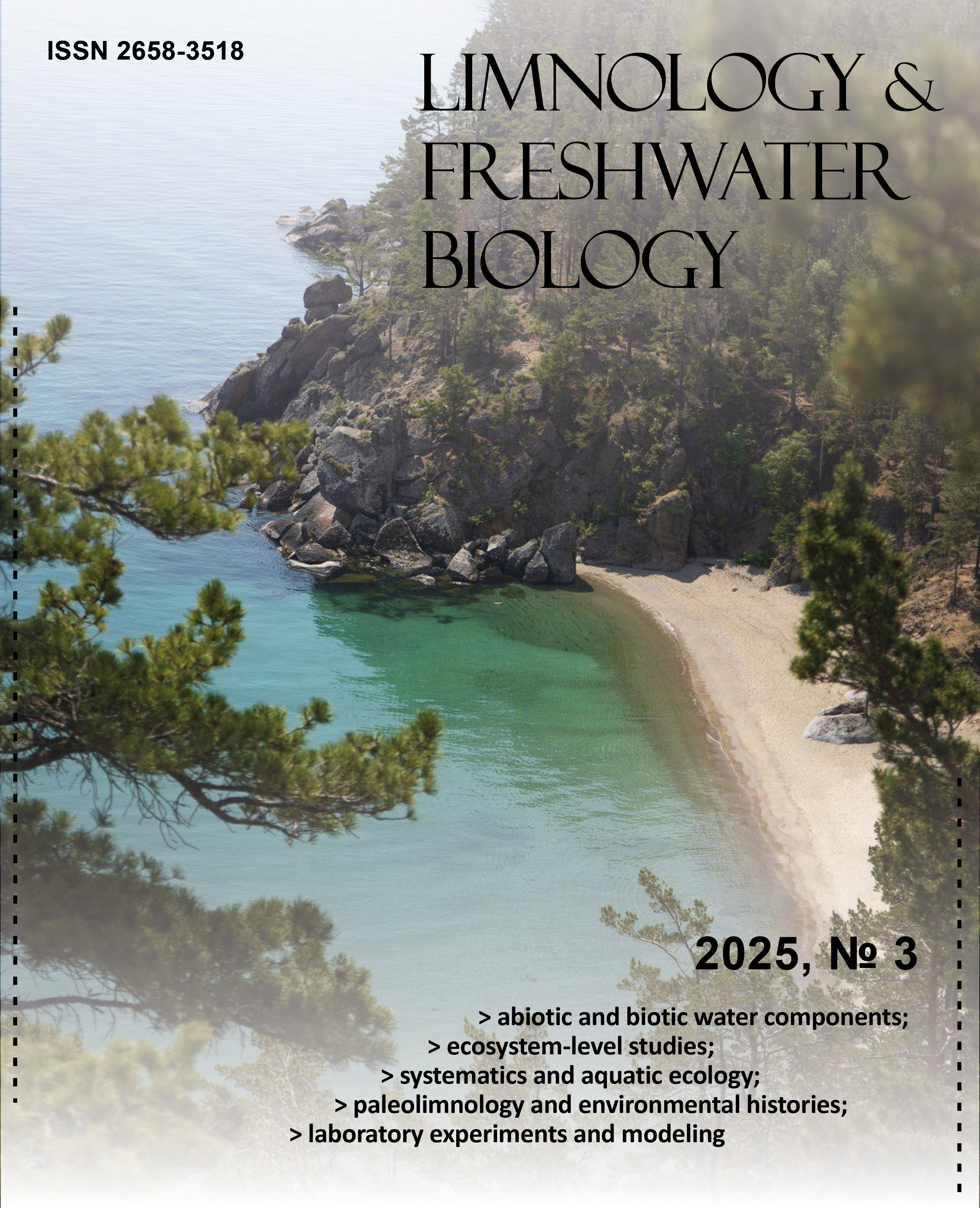Decoding the Influence of Water Quality and Seasonal Shifts on Phytoplankton Communities in Eastern Indian Freshwater Waterbodies
DOI:
https://doi.org/10.31951/2658-3518-2025-A-3-284Keywords:
Phytoplankton dynamics, physicochemical parameters, nutrient variation, correlation coefficient, PCAAbstract
This study presents a comparative analysis of phytoplankton dynamics and ecological status across two freshwater ponds in Birbhum, West Bengal, India, for the two years (from April 2020 to March 2022). The two study sites included a fish cultivation pond (S1) and an agricultural waste pond used for irrigation (S2). Phytoplankton productivity and environmental parameters, including chlorophyll-a content, temperature, pH, dissolved oxygen (DO), biological oxygen demand (BOD), gross primary productivity (GPP), net primary productivity (NPP), and nutrient levels (nitrate, phosphate, ammonia, silicate, and chloride) were monitored. Both sites were exposed to similar temperature ranges (12°C to 38°C), but S2 was more alkaline than S1. Chlorophyll-a content ranged from 1.84 to 5.78 mg/L in S1 and 1.22 to 3.68 mg/L in S2. Nutrient concentrations peaked during post-monsoon period, supporting enhanced phytoplankton growth, and were minimum in summer for both sites. Principal component analysis revealed that nitrate, phosphate, and silicate were primary influencers for S1, while pH, nitrate, phosphate, ammonia, and chloride were influential for S2. GPP and NPP emerged as common factor in both ponds. Correlation analysis indicated that chlorophyll-a in S1 was positively associated with nitrate, phosphate, silicate, and GPP-NPP, whereas, in S2, it correlated positively with pH, nitrate, phosphate, ammonia, and chloride. The post-monsoon season exhibited the highest phytoplankton diversity, dominated by chlorophycean species in S1 and Euglenophyceae in S2, the latter likely due to elevated ammonia levels.
Downloads
Published
Issue
Section
License
Copyright (c) 2025 Limnology and Freshwater Biology

This work is licensed under a Creative Commons Attribution-NonCommercial 4.0 International License.

This work is distributed under the Creative Commons Attribution-NonCommercial 4.0 International License.






